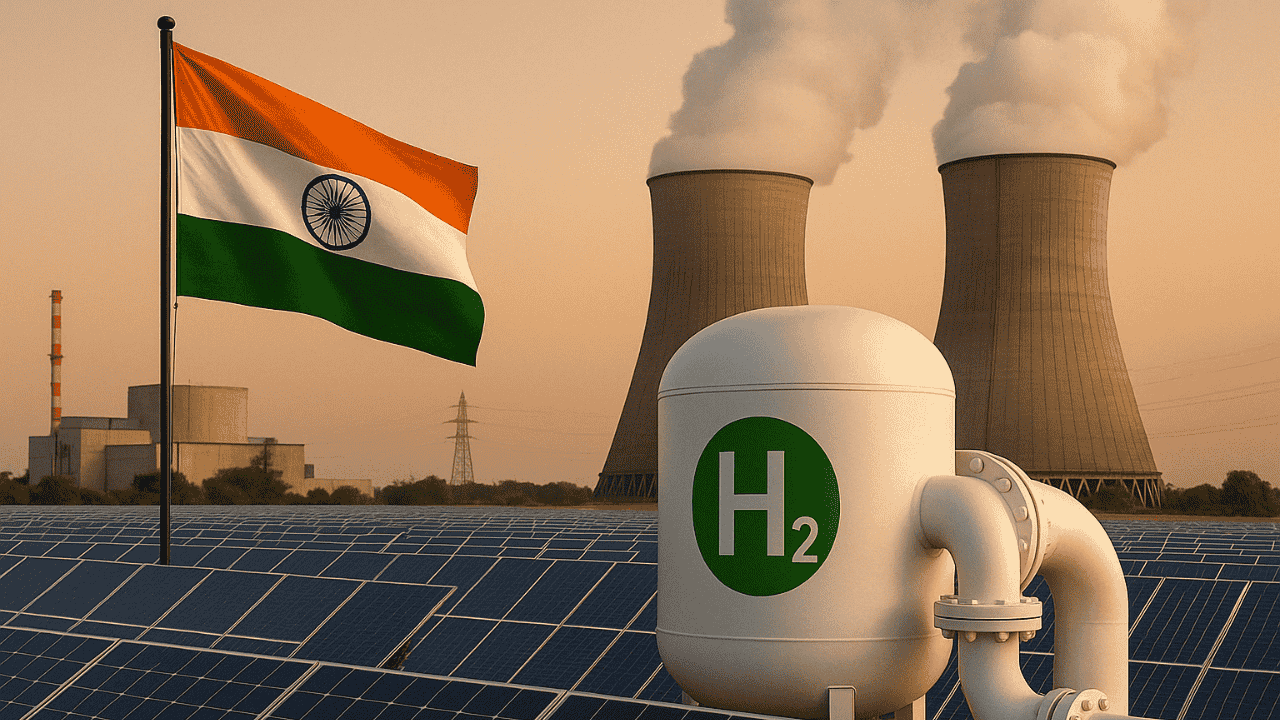Explore India’s surging power demand, nuclear energy plans, and the critical role of hydrogen in achieving net-zero. Essential current affairs for March 2025.
India’s Rising Power Demand and the Hydrogen Factor: A Comprehensive Current Affairs Update
India’s journey to a net-zero economy is reshaping its energy landscape, with a sharp focus on electrification, low-carbon sources, and hydrogen as a transformative fuel. For aspirants of UPSC, SSC, Banking, and other competitive exams, understanding these developments is crucial. Here’s an in-depth, exam-oriented analysis of the latest energy trends, government initiatives, and their implications.
India’s Power Demand: The Road to Net-Zero
India, the world’s fastest-growing major economy, is witnessing an unprecedented surge in electricity demand—projected to rise by 8% this year—driven by rapid economic growth and digital transformation3. Achieving a net-zero economy by 2070 will require the massive electrification of end uses, from industry to transport, and a shift away from fossil fuels39.
Key Points:
Electrification of End Uses: Transitioning industrial processes (like steel and fertilizer production) from fossil fuels to electricity and hydrogen.
Surging Demand: India’s peak electricity demand could reach 409 GW by 2030, up by 67 GW from current levels10.
Energy Mix: Solar, wind, hydro, and nuclear are all vital, but renewables alone cannot meet the entire demand34.
Nuclear Power: A Pillar of India’s Energy Transition
Recognizing the limitations of renewables, the Government of India has set an ambitious target: 100 GW of nuclear power capacity by 204749. Nuclear energy is positioned as a reliable, low-carbon base load source to complement intermittent renewables.
Nuclear Power Highlights:
Expansion Plans: The Nuclear Power Corporation of India Limited (NPCIL) is rolling out a fleet of 700 MW Pressurized Heavy Water Reactors (PHWRs), with 26 units planned or under construction9.
Bharat Small Reactors (BSRs): New 220 MW PHWRs designed for industrial use, supporting decarbonization of sectors like steel and aluminum49.
Policy Push: The Union Budget 2025-26 allocates ₹20,000 crore for the Nuclear Energy Mission, including R&D for Small Modular Reactors (SMRs) and amendments to encourage private sector participation4.
The Hydrogen Factor: India’s Green Hydrogen Ambitions
Hydrogen is emerging as a game-changer for India’s decarbonization, especially for industries that require high heat or molecular feedstock. The National Green Hydrogen Mission is central to this strategy, with a target of producing 5 million metric tons (MMT) of green hydrogen annually by 20302811.
Green Hydrogen in Focus:
Production & Exports: India aims to export over half of its green hydrogen target by 2030, leveraging hubs in Odisha, Andhra Pradesh, Tamil Nadu, Kerala, and Gujarat2.
Electrolyser Manufacturing: 3 GW of annual electrolyser manufacturing capacity approved; gigafactories are being set up to scale domestic production6811.
Industrial Applications: Hydrogen is set to replace carbon in steelmaking and provide feedstock for fertilizers, supporting deep decarbonization25.
Certification & Taxonomy: The government is considering redefining “green hydrogen” to “low-carbon hydrogen,” potentially including nuclear-powered hydrogen production2.
Synergy: Hydrogen, Storage, and Grid Flexibility
Integrating renewables at scale requires innovative solutions for grid stability. Hydrogen production via electrolysers can absorb surplus renewable electricity, reducing the need for costly battery storage and preventing curtailment of solar and wind power710.
Innovative Solutions:
Grid Balancing: Electrolysers and battery storage can be synergized to optimize demand and supply, minimizing the need to flex base-load nuclear plants10.
Policy Recommendations: Shift from “green hydrogen” to “low-carbon hydrogen” in official taxonomy, and integrate hydrogen generation with electricity storage for better economics10.
Key Takeaways for Competitive Exams
India’s power demand is rising rapidly, necessitating a diversified energy mix.
Nuclear energy is set to play a major role, with a 100 GW target by 2047 and new Bharat Small Reactors for industry49.
The National Green Hydrogen Mission aims for 5 MMT annual production by 2030, with strong export ambitions2811.
Electrolyser manufacturing and hydrogen-powered industrial processes are being scaled up68.
Policy shifts may broaden the definition of green hydrogen to include nuclear-powered production2.
Synergy between hydrogen production and electricity storage is crucial for grid stability and economic efficiency710.
Why this matters for exams
Understanding India’s evolving energy strategy is vital for scoring well in the “current affairs March 2025,” “daily GK update,” and “Atharva Examwise current news” sections of competitive exams. This topic intersects with environment, economy, science & technology, and government policy—making it a high-yield area for UPSC, SSC, Banking, and other exams.
Stay updated with Atharva Examwise for more “competitive exam news” and in-depth analyses of key current affairs shaping India’s future.






